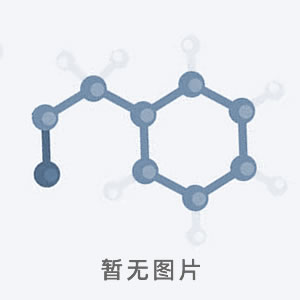本网站销售的所有产品仅用于工业应用或者科学研究等非医疗目的,不可用于人类或动物的临床诊断或者治疗,非药用,非食用。
Recombinant Human Interleukin-3
英文名:
Cas号:
Cas号:
检测信息查询

| 货号 | 规格 | 货期 | 库存 | 价格 | 会员价 | 订购 |
| 1308132559-10 μg | 0 | ¥4180 | ||||
| 1308132559-50μg | 0 | ¥8400 |
| 别 名 | |
| Cas号 | |
| M D L | |
| 分子式 | |
| 分子量 | |
| 产品参数 | |
| 性状 | Recombinant Human Interleukin-3 是一种造血细胞因子,对血小板和中性粒细胞计数具有良好效果,对继发性造血功能衰竭具有治疗效果。
Synonyms rHuIL-3; Hematopoietic growth factor; Mast cell growth factor; MCGF; Multipotential colony-stimulating factor; P-cell-stimulating factor Species Human Source E. coli Accession P08700 Gene ID 3562 Molecular Weight Approximately 15.2 kDa AA Sequence MAPMTQTTPL KTSWVNCSNM IDEIITHLKQ PPLPLLDFNN LNGEDQDILM ENNLRRPNLE AFNRAVKSLQ NASAIESILK NLLPCLPLAT AAPTRHPIHI KDGDWNEFRR KLTFYLKTLE NAQAQQTTLS LAIF Biological Activity The ED50 is <0.5 ng/mL as measured by TF-1 cells, corresponding to a specific activity of >2 × 107 units/mg. Appearance Lyophilized powder. Formulation Lyophilized after extensive dialysis against PBS. Endotoxin Level <0.2 EU/μg, determined by LAL method. Reconstitution Reconstitute the lyophilized recombinant Human Interleukin-3 (rHuIL-3) to 100 µg/mL using ddH2O or diluted with PBS. Storage & Stability Lyophilized recombinant Human Interleukin-3 (rHuIL-3) is stored at -20°C. After reconstitution, it is stable at 4°C for 2 weeks or -20°C for longer. It is recommended to freeze aliquots at -20°C or -80°C for extended storage. Shipping Room temperature in continental US; may vary elsewhere. Background Interleukin-3 (IL-3) is aglycoprotein belonging to the hematopoietic growth factor family that in preclinical in vitro and in vivo studies has exhibited a multilineage activity. Recombinant human interleukin-3 (rhIL-3) enhances the mobilization of peripheral blood progenitor cells by recombinant human granulocyte colony-stimulating factor (rhG-CSF)[1]. Human interleukin-3 (hIL-3) is a multipotent hematopoietic cytokine produced by mitogen and antigen-activated keratinocytes, T-lymphocytes, mast cells, NK cells, monocytes and endothelial cells. The hematopoietic progenitor cells are proliferated and differentiated with the help of hIL-3 protein into mature erythrocytes, mast cells, megakaryocytes and granulocytes. The potential use of hIL-3 protein has been extensively tested in various clinical applications such as bone marrow transplantation, hematological malignancies, cytopenias, aplastic anemia and various types of cancer[2] |
| 贮存 |

 小程序扫码下单
小程序扫码下单

 沪公网安备 31012002003054号
沪公网安备 31012002003054号